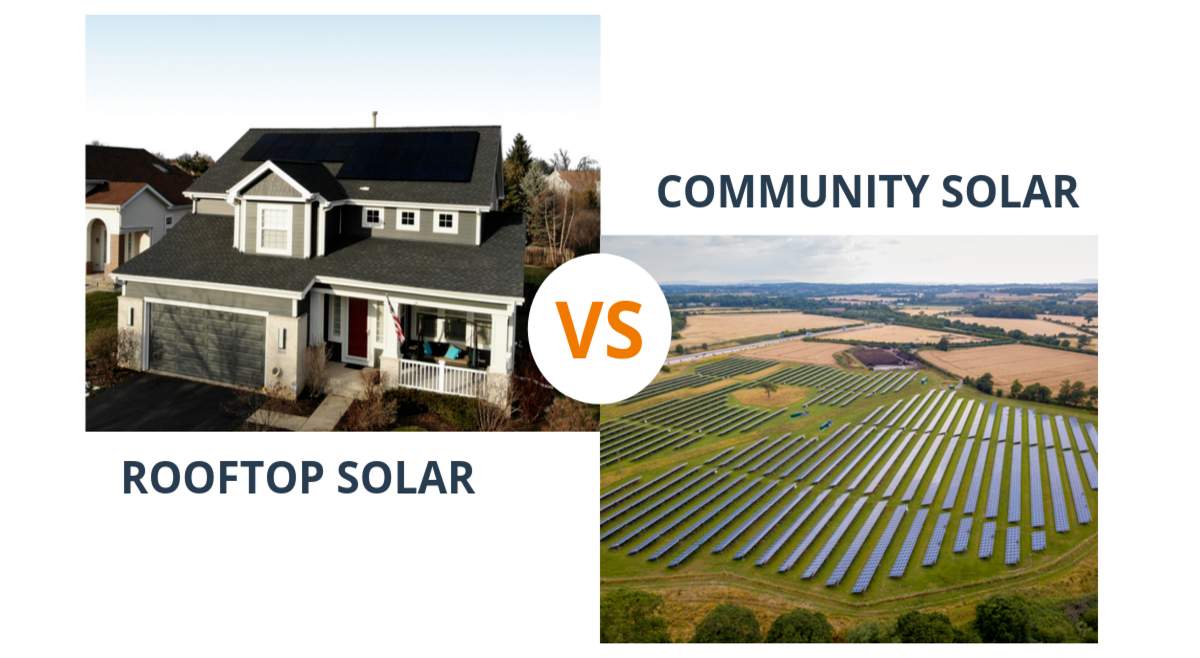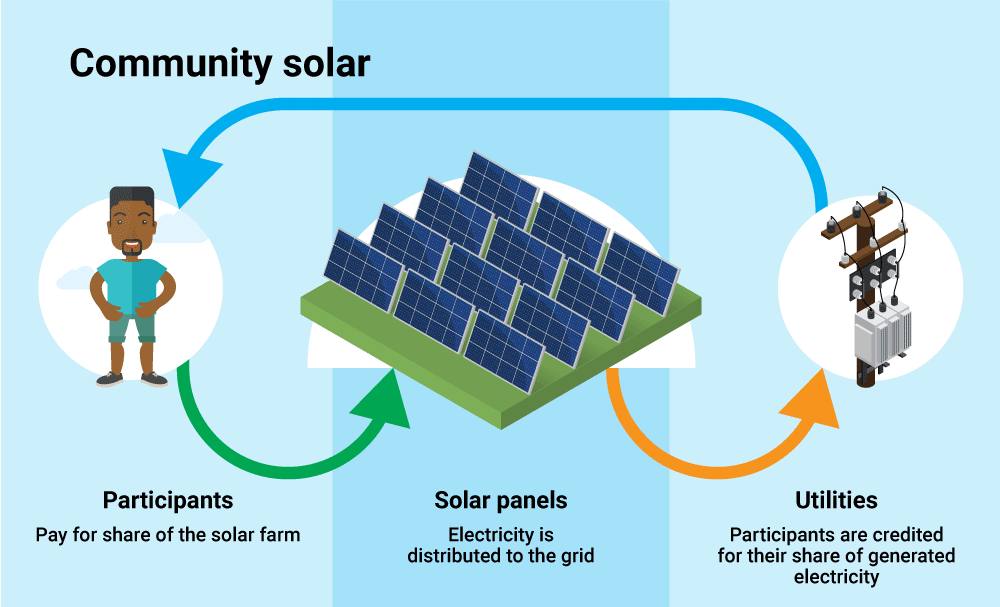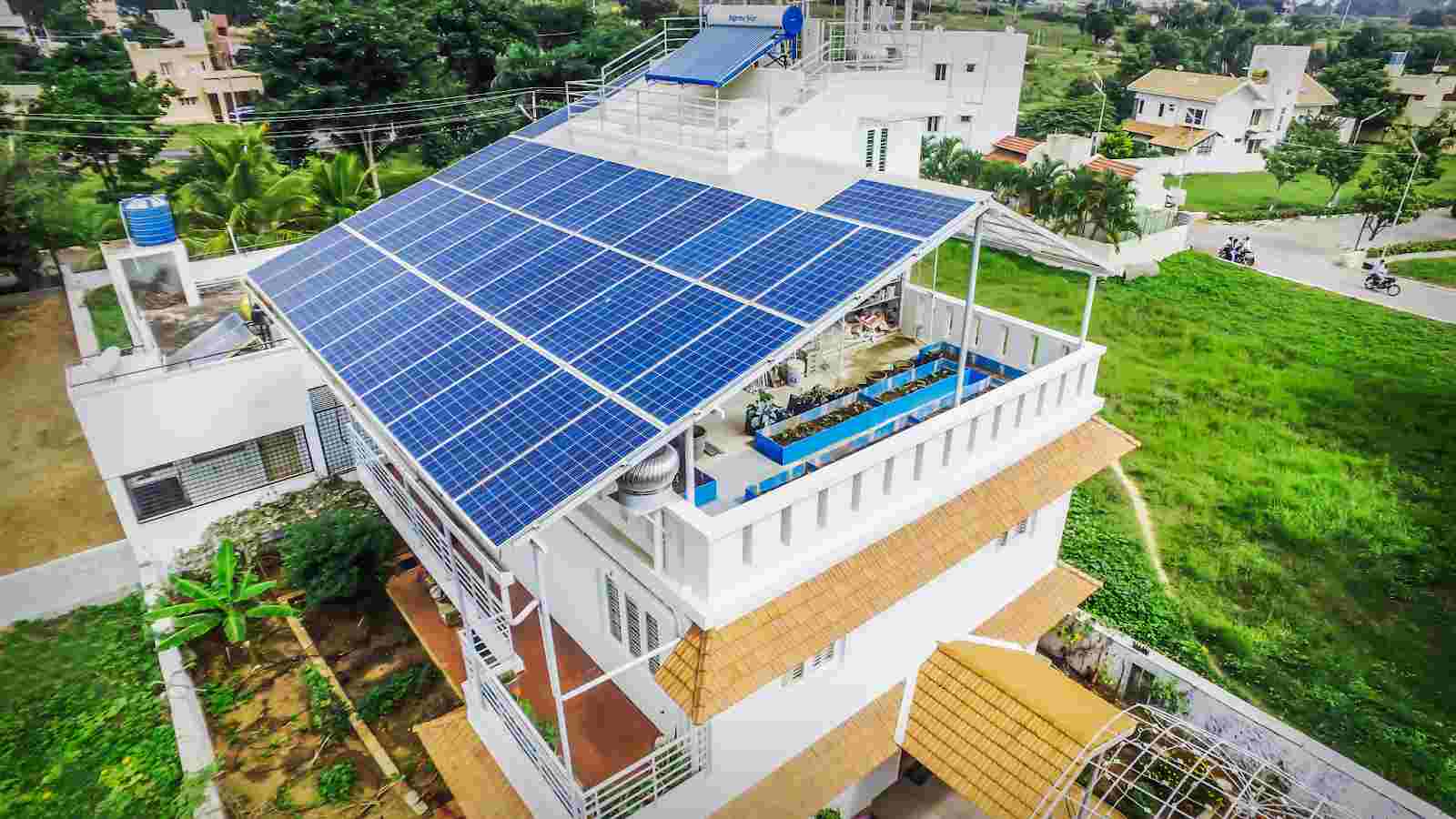Community Solar Vs Rooftop Solar? Which One To Choose

Community Solar vs. Rooftop Solar: What’s Better?
Both community solar and rooftop solar produce 100% renewable energy, aid in reducing energy dependency on fossil fuels, and can cut electric costs. Where they differ is in the placement and ownership of the solar systems, as well as the practicality of each programme in assisting a person in determining what is best for them.
There are several ways to participate in the clean energy revolution, and each step matters. Nonetheless, everyone's unique situation—location, income, time, and so on—influences the kind of measures they can take. You may want to explore solar energy for your house if you want to promote clean energy, reduce your carbon footprint, or simply live a more ecologically friendly lifestyle. One of the most popular choices for those interested in renewable energy is between community and rooftop solar. Lets learn how rooftop solar systems differ from Community Solar, from installation and prices to qualifying and enrollment.
What Is Community Solar?
A community solar initiative enables you to participate in a local solar farm. When you join, you will own a share of the local solar farm. Your solar share, or the particular proportion of the solar farm allotted to you, is tailored to match the amount of electricity you consume in your house, just like rooftop panels.
Solar developers construct community solar farms that are linked to the current grid. Utilities enjoy this since the solar farm gives them affordable, consistent power while also assisting them in reducing their emissions–all without requiring them to construct their own new infrastructure. Locals enjoy it even more since it offers them a low-cost method to go green while earning consistent monthly savings.

Whether or not they participate in community solar, everyone benefits from better air quality and healthier people. Those who do sign up, on the other hand, frequently save 5–15 percent on their electricity bills.The number of families that can be enrolled depends on the size of the solar farm, which can range from 40 to over 400. Customers that sign up for community solar receive "solar credits" on their bills, which provide them with a monthly discount. Consider rooftop solar: your solar panels produce electricity, your utility compensates you for it, and you save money.Community solar is similar, except instead of your roof, you earn credits from your solar share nearby.
It is the solar developer's and utility's way of thanking the individuals who support sustainable energy.
How Does Community Solar Work?
Community solar is a network of hundreds of panels installed on undeveloped property. These panels are placed in columns and rows to form a massive system for converting solar energy into electricity. The generated electricity is then routed into the electric system and distributed to participating properties. The procedure is quite similar to that of placing solar panels on a roof.
One major distinction is that solar farms employ vast amounts of land and hundreds of panels to generate and profitably sell power to the local population.
Is Community Solar Worth It?
Community solar makes use of rules similar to those that provide tax breaks to homeowners who install rooftop solar panels. Net metering lets those who generate their own solar energy sell it back to the grid. Utilities utilize a mechanism known as "virtual net metering" for community solar, which means that when your portion of the community solar farm produces electricity, you receive a credit on your utility bill–just as if you had produced it on your own roof.
In an ideal world, your solar share would provide just the amount of electricity you use for your home. In fact, you'll create a bit more from time to time, so for every additional watt you make that you don't use, your utility will offer you a credit that you may use to pay for future energy consumption. When your solar panels don't produce enough energy to satisfy 100 percent of your energy needs (typically in the winter), you may use the credits you've saved to optimize your savings.
What Is Rooftop Solar?

Rooftop solar is a photovoltaic system in which the electricity-generating solar panels are positioned on the rooftop of a home or business building or structure. Photovoltaic modules, mounting systems, cables, solar inverters, and other electrical accessories are among the different components of such a system. Rooftop-mounted systems are tiny in comparison to ground-based photovoltaic power facilities with megawatt capabilities. Rooftop PV systems on residential buildings normally have capacities ranging from 5 to 20 kilowatts (kW), but those installed on commercial buildings sometimes have capacities of 100 kilowatts or more.
How Does Rooftop Solar Work?
A solar PV rooftop system is basically a small power plant on your rooftop. The Grid interactive Rooftop Solar Photovoltaic (PV) mainly consists of three major components. These are the solar PV modules, the mounting structure for the modules, and the inverters, or power conditioning units. Solar PV modules form an array, and it requires a mounting structure to hold the PV modules at the required angle for maximum generation. The solar panels convert solar energy in the form of light into electricity in DC form (Direct Current). DC electrical energy is converted to AC (alternating current) power by an inverter/power conditioner unit connected to the grid via an AC distribution board. A/C output power can be measured via a connected meter board. The system's 415V AC output can be synchronized with the grid and export power to the grid depending on solar power and local consumption.
The amount of space required to install rooftop solar panels is determined by the solar system's size. For example, a 1000 watt solar system requires 65 to 90 square feet of installation area.
How Much Power Can Be Produced By Community Vs. Rooftop Solar?
A solar farm may generate anywhere from 200 million to 100 million kilowatt-hours (kWh) of power each year, enough to power up to 75,000 households.
A 1-megawatt shared farm may generate up to 1460 megawatt-hours (MWh) per year on average. Furthermore, it is ultimately determined by the amount of sunshine received by solar panels.
Overall, investing in community solar is an excellent way for homes or companies to reduce their power costs.
When exposed to direct sunlight, rooftop solar panels may generate around 300 watts per hour. The overall amount of power produced is determined by the number of hours of sunshine received by solar panels during the day.
A 1 KWp panel will produce around 1,400–1,600 KWh (units) per year, or approximately 4 KWh per day. This is roughly typical of rooftop PV plant production in India. It is based on an annual average. The amount of energy generated on any given day at your location will fluctuate depending on the weather.
What Is The Installment Cost Of Community Vs. Rooftop Solar?
The cost of constructing a shared farm is determined by the total amount of land and the number of panels used. For 100 megawatts of electricity capacity, the average cost of installing a solar farm is roughly $30 million. The more panels there are, the more money it will cost to build.
Solar communities operate on a subscription-based model, in which residents "subscribe" and get a percentage of the solar electricity generated by panels in exchange for a monthly fee. There is no initial outlay of funds. Solar farms make it easy for low-to middle-income consumers to participate in community solar projects and receive significant advantages because the initial investment is zero. A single solar panel typically costs between $200 and $250, depending on criteria such as quality.
A rooftop solar system is made up of many modules, such as cables, modules, module mounting structures, string inverters, lightning arrestors, conduits, earthing electrodes, earthing strips, and more. As a result, the typical cost of a residential solar plant is determined by the kind, size, and quality of solar panels used.
Furthermore, the typical size of rooftop solar panels ranges from 3,000 to 8,000 watts and can cost up to $28,000 for complete installation.
Benefits of Community Vs. Rooftop Solar:
Benefits of Community Solar:
Does Not Require Personal Area To Setup:
People may save money on their power costs by investing in a local shared solar farm through community solar. To join, you do not need to have your own area or rooftop. Whether you own a condo or rent one, community solar projects can provide power to as many families as feasible in the area.
No Troublesome Installation:
Because of the shades, construction, and orientation of their roofs, most homeowners are unable to install rooftop panels. Installing a personal solar panel system is also time-consuming.
The entire process, from locating the correct panels to hiring a competent contractor, may be aggravating.
Beneficial For Renters:
Community solar farms are ideal for renters. In most cases, renters must obtain permission from their landlords before installing solar panels on their rooftops.
Fortunately, community solar does not fall into this category. You do not need to obtain permission from your landlords. Furthermore, some communities may be able to offer you solar energy simply because you are a member of the community.
Zero Upfront Costs:
The majority of community solar systems provide subscription options to members. You do not need to buy panels if you subscribe to a solar farm.
Instead, customers just pay a reduced cost for solar electricity provided by the panels. It means you won't have to pay anything up front.
Energy Independence:
Because community solar farms enable people all around the world to generate their own power, they reduce people's reliance on global energy markets.
These systems also safeguard households from supply outages and fluctuating energy prices.

Benefits of Rooftop Solar:
Cost Savings:
Saving money is one of the most significant advantages of installing rooftop solar panels. Due to the model's low cost, the growing cost of power makes solar panel installation a no-brainer for companies and homes.
Low Maintenance Costs:
Solar panels are long-lasting and require little maintenance. They must be cleaned and maintained on a regular basis, which is not difficult. Most rooftop solar systems have a life expectancy of 25 to 30 years, making them an excellent investment.
No Additional Space For Installation:
Solar panels do not require large or separate property for installation because they are mounted on the rooftops of residential and commercial structures. This is a feasible and long-term idea. Installing solar panels on your rooftop has the added benefit of increasing its market value.
Multiple Applications:
Aside from generating energy, the power generated by solar panels may be used for a variety of other applications. It may be used to heat water, deliver hot air or water to a building, power electric generators, and other things. Rooftop solar panels are an excellent choice for property owners all around the world because of these applications.
Government Support:
People who install rooftop solar panels on their premises, whether commercial or residential, are eligible for a variety of government incentives and tax credits.
Choose The Right One!!!
When it comes to picking one, you should think about what you're investing in, how you'll pay for it, the bonuses, the environmental benefits, and so on.
Community solar projects need minimal to no upfront expenditure and do away with the need to purchase any equipment in order to consume electricity. They allow low-income people and tenants to take advantage of the many advantages of this sustainable, low-cost energy source.
Rooftop solar panels, on the other hand, provide homeowners with more solar power and financial benefits.
Roof space and direction, normal power use, and shading from buildings or trees are all elements that might help you evaluate if rooftop solar is right for your home.
Whether you're interested in community solar or rooftop solar, one thing to remember is that both community and rooftop solar panels provide reasonable power for your home and provide an efficient output thanks to solar software, helping you preserve the environment while also saving money.

